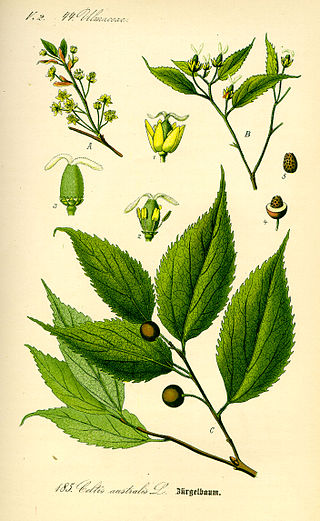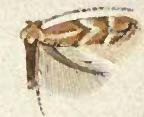
Conrad Celtes was a German Renaissance humanist scholar and poet of the German Renaissance born in Franconia. He led the theatrical performances at the Viennese court and reformed the syllabi.

The Lepontii were an ancient Celtic people occupying portions of Rhaetia in the Alps during the late Bronze Age/Iron Age. Recent archeological excavations and their association with the Golasecca culture and Canegrate culture point to a Celtic affiliation. From the analysis of their language and the place names of the old Lepontic areas, it was hypothesized that these people represent a layer similar to that Celtic but previous to the Gallic penetration in the Po valley. The suggestion has been made that the Lepontii may have been celticized Ligurians.

Cisalpine Gaul was the name given, especially during the 4th and 3rd centuries BC, to a region of land inhabited by Celts (Gauls), corresponding to what is now most of northern Italy.

Celtis is a genus of about 60–70 species of deciduous trees, commonly known as hackberries or nettle trees, widespread in warm temperate regions of the Northern Hemisphere. The genus is part of the extended Cannabis family (Cannabaceae).

Celtis australis, the European nettle tree, Mediterranean hackberry, lote tree, or honeyberry, is a deciduous tree native to Southern Europe, North Africa, and Asia Minor. The tree was introduced to England in 1796.

Celtis occidentalis, commonly known as the common hackberry, is a large deciduous tree native to North America. It is also known as the nettletree, sugarberry, beaverwood, northern hackberry, and American hackberry. It is a moderately long-lived hardwood with a light-colored wood, yellowish gray to light brown with yellow streaks.

Gracillariidae is an important family of insects in the order Lepidoptera and the principal family of leaf miners that includes several economic, horticultural or recently invasive pest species such as the horse-chestnut leaf miner, Cameraria ohridella.

Celtis laevigata is a medium-sized tree native to North America. Common names include sugarberry, southern hackberry, or in the southern U.S. sugar hackberry or just hackberry.

Sasakia charonda, the Japanese emperor or great purple emperor, is a species of butterfly in the family Nymphalidae. It is native to Japan, the Korean Peninsula, China, northern Taiwan and northern Vietnam. Its wingspan averages 50 mm (2.0 in) for males, and 65 mm (2.6 in) for females. They are common in the upper canopies of forests, only coming down to feed or to find salt sources. The larvae of the species feed on hackberries, like Celtis jessoensis, Celtis japonica and Celtis sinensis.

Asterocampa celtis, the hackberry emperor, is a North American butterfly that belongs to the brushfooted butterfly family, Nymphalidae. It gets its name from the hackberry tree upon which it lays its eggs. The hackberry tree is the only host plant for A. celtis and is the food source for larvae.

Celtis sinensis is a species of flowering plant in the hemp family, Cannabaceae, that is native to slopes in East Asia.

Phyllonorycter millierella is a moth of the family Gracillariidae. It is found in southern Europe, including Spain, France, Switzerland, Italy, Croatia, Bulgaria, North Macedonia and Greece.
Caloptilia fidella is a moth of the family Gracillariidae. It is found from Germany to Italy and North Macedonia and from France to Russia and Ukraine.
Caloptilia celtina is a moth of the family Gracillariidae. It is known from South Africa.
Phyllonorycter bifurcata is a moth of the family Gracillariidae. It is known from the islands of Kyūshū, Shikoku and Tusima in Japan.
Phyllonorycter luzonica is a moth of the family Gracillariidae. It is known from Luzon island in the Philippines.
Caloptilia celtidis is a moth of the family Gracillariidae. It is known from China, Hong Kong and Japan.

Phyllonorycter celtisella is a moth of the family Gracillariidae. It is known from Ontario in Canada and Connecticut, Illinois, Kentucky, Ohio, Oklahoma, and Texas in the United States.

Phyllonorycter celtifoliella is a moth of the family Gracillariidae. It is known from Illinois, Kentucky, Ohio, West Virginia, Florida, Georgia, Maryland and Texas in the United States.

Gracillariinae are a subfamily of moths which was described by Henry Tibbats Stainton in 1854.












